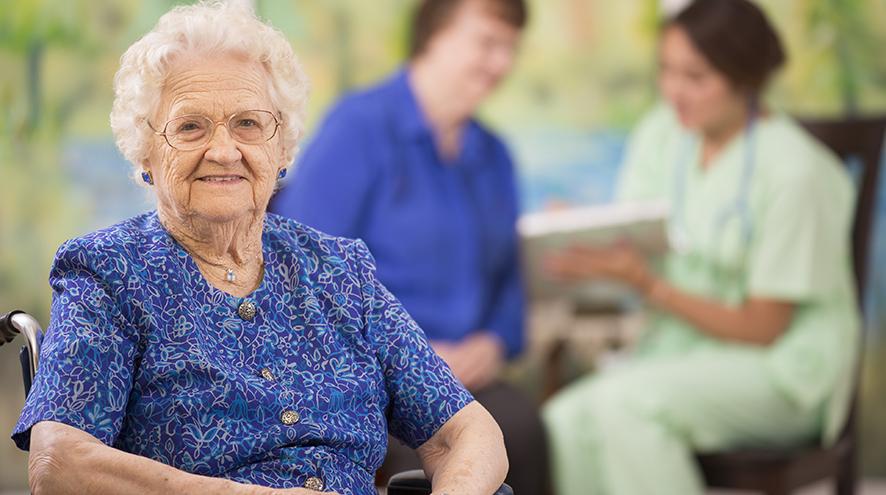Moving in to long-term care
There is no right way to feel about the move. Some caregivers feel tired, angry, guilty, embarrassed, or even relieved. Speak with someone you feel comfortable with to help you process your emotions.

Preparing for a move
When a room becomes available, you’ll need to make a quick decision. Be prepared:
- Get support lined up - pre-arrange for a family member or a friend to be on standby to care for children or help, if necessary.
- If you are employed, consider talking with your employer about the possibility that you may need some time off with very little notice. Try to save a few vacation days in case the move comes up suddenly.
- Organize the logistics - have money saved to pay the first month’s rent and any other services (e.g., phone). Have movers lined up. Do anything you can ahead of time.
- If the person living with dementia has a pet, make sure you have considered all options of who could permanently take care of it. Ask friends, family or perhaps your local Humane Society for support.
- Pack - essentials like medications and clothing. Photographs, music, or other personal items can help the person feel more comfortable. Avoid bringing valuables.
- Check out our What to bring on moving day checklist.
- Check out our What to bring on moving day checklist.
- Prepare key documents – have a copy ready to bring and a copy for yourself:
- Key contacts
- Power of attorney
- List of medications and previous health assessments (if available)
- Medical coverage and insurance benefits
- Medical treatments
- Advance care directives or living will
- Download our Tips for preparing for a move.
Even after an extensive search, you may not find everything you want in a single home. Try to be flexible and consider whether you could work with the staff to make the home a better fit for the person living with dementia.
On moving day
- Take care of the person living with dementia. Comfort them if they feel anxious, upset or withdrawn. When you arrive, take some time to settle in the room and visit common areas of the home.
- Take care of yourself. Schedule the move over a few days. Allow plenty of time for paperwork and ideally, see if you can do it before the moving day. If you can, bring a friend along or have someone waiting for you at home when you return to help you decompress.
- For peace of mind, check with staff at the long-term care home to see how things are going.
- Check out our What to bring on moving day checklist.
After the move
Adjusting will take time - for both of you. You’re now sharing the responsibility of care with others and they may do things differently than you.
Get through the first few weeks by following these tips:
- Find a primary contact person to speak to when you have questions or concerns.
- Share your knowledge of the person with staff – needs and preferences, a bit of information about the person’s life, coping strategies that worked for you while caring for the person. This will help staff care for them.
- Maintain realistic expectations of the home and make an effort to get to know staff, management, residents, and other caregivers.
- Bring any items that might make the person with dementia feel more comfortable. Print this checklist of what to bring on moving day.
- Get involved – help with tasks, join the person for meals, attend activities organized for the residents.
- Keep reassuring the person with dementia by telling them how much you care.
- Stay up to date with the doctor and staff about the person’s condition, care, and treatment. Ask for a copy of the care plan.
The biggest benefit of having outside care is that you can now give your full attention and emotional support to the person with dementia.
What's next? Read our tips for settling in after moving day.
More useful links and resources
Defy Dementia Podcast: Teaming Up for Transitions to Long-Term Care. Baycrest. This podcast episode discusses practical strategies to make the transition to long-term care easier for everyone. In this episode, caregiver Liane Pelissier shares her experience helping her father, who lives with dementia, move to long-term care. This episode also comes with a list of helpful resources.
